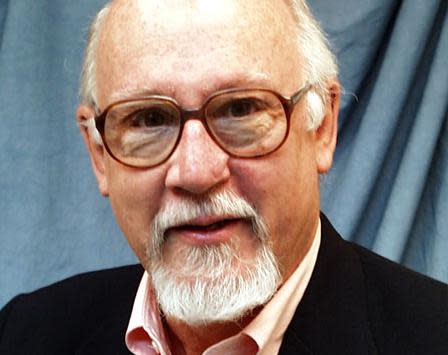Michael Martone’s Indiana is funnier than the real Indiana | DON NOBLE
- Oops!Something went wrong.Please try again later.

In 1919, Sherwood Anderson published his collection of loosely connected stories “Winesburg, Ohio” and it became, almost instantly, an American classic.
Anderson wrote 22 short stories, each about a citizen of his fictional Winesburg. At that time the small town was held in nearly religious awe. The pre-industrial town of most people’s imaginations was full of big front yards, big oak trees with a swing hanging from a limb, and a freckle-faced lad with a dog: an Eden.
Not all was as it appeared, said Anderson. In his Winesburg, the characters feel smothered by conformity and isolated from one another. Unable to be fully themselves, each becomes distorted into a narrow grotesque, with a single obsession, or secret.
It was a place to flee from.
Now over 100 years later, Michael Martone has published his “Sketches of Winesburg, Indiana,” a fictional post-industrial version of Anderson.
Martone, like Anderson, includes a map of his fictional village.
Martone’s volume contains an astounding 130 very short stories. A few characters have more than one, but mostly they are individual little cries.
The characters SHOULD move away, but show no sign of doing so. They are caught, frozen.
The Winesburg of Anderson seemed to be thriving, which made the inhabitants’ unhappiness less obviously explainable.
Martone’s Winesburg, Indiana is not thriving. Like much of the Midwest, its best years seem to be behind it and there is an exhausted, Rust Belt quality to the place. Even the local river, the Fork River, gives up and runs underground
(N. B.: Anderson’s Winesburg had been influenced by the poetry collection “Spoon River Anthology.”
Get it? “Spoon River,” “Fork River”? Martone has no shame. It is all fun.)
Some business enterprises hang on.
There is a busy business in burials because the nearby city of Fort Wayne — Martone’s actual home place — decided to become a cemetery-free zone, exhume all its dead and transfer them to Winesburg, a state-sanctioned reburial site. This has some psychological effect. The city manager admits that he knows not how to “cease and desist the steeping municipal sadness here…. The newly dead arrive daily, carried by a special midnight-blue fleet of North American Van Lines tractor-trailers….”
Likewise, due to an odd Indiana law regarding hair, from barbers’ floors, Winesburg has a state-registered hair dump. Hair is brought here and a “thriving cottage industry persists, that of locket-making” even though the hair used is anonymous.
No, reader, these Indiana laws are not real. Martone invents state law as needed.
There is a still-operating moist towelette company, but the floss factory has closed.
There is one resident at the YMCA and perhaps the last Fuller Brush salesman in America. There was once a lively Lions Club. Now there is one lone Lion left.
Many people behave in ways that are shadows, so to speak, of the real thing. Carol Clay collects the stapled-up Xeroxes of lost cat notices. She pries them off telephone poles with a little flathead screwdriver. She says: " I'm allergic to the real things, to the real cat. But I fill my little house with these...."
A determined fellow broadcasts his cable show from the deserted and abandoned food court of the defunct mall.
An earlier Martone book “The Blue Guide to Indiana,” 2001, my favorite of all his books, was an entire volume of tourist attractions that do not exist except in Martone’s imagination.
Many fiction writers strive to create fiction that seems real. Martone writes stories that seem, truly, real, but are not at all. Over the decades in Alabama, he has written hundreds of stories set in Indiana, not the real one — his imagined one.
Sometimes writers need a little distance from their material. Thomas Wolfe in his Brooklyn apartment wrote of Asheville. James Joyce, in Paris, wrote of Dublin — he could remember the shops on a street, in order.
Martone in Tuscaloosa writes with great verve and a prolific comic imagination of his native Indiana. He has no need to remember details. He makes them up as he goes along.
Don Noble’s newest book is Alabama Noir, a collection of original stories by Winston Groom, Ace Atkins, Carolyn Haines, Brad Watson, and eleven other Alabama authors.
“Plain Air: Sketches from Winesburg, Indiana”
Author: Michael Martone
Publisher: Baobab Press
Pages: 196
Price: $ 16.95 (Paper)
This article originally appeared on The Tuscaloosa News: Michael Martone’s Indiana is funnier than the real Indiana | DON NOBLE
